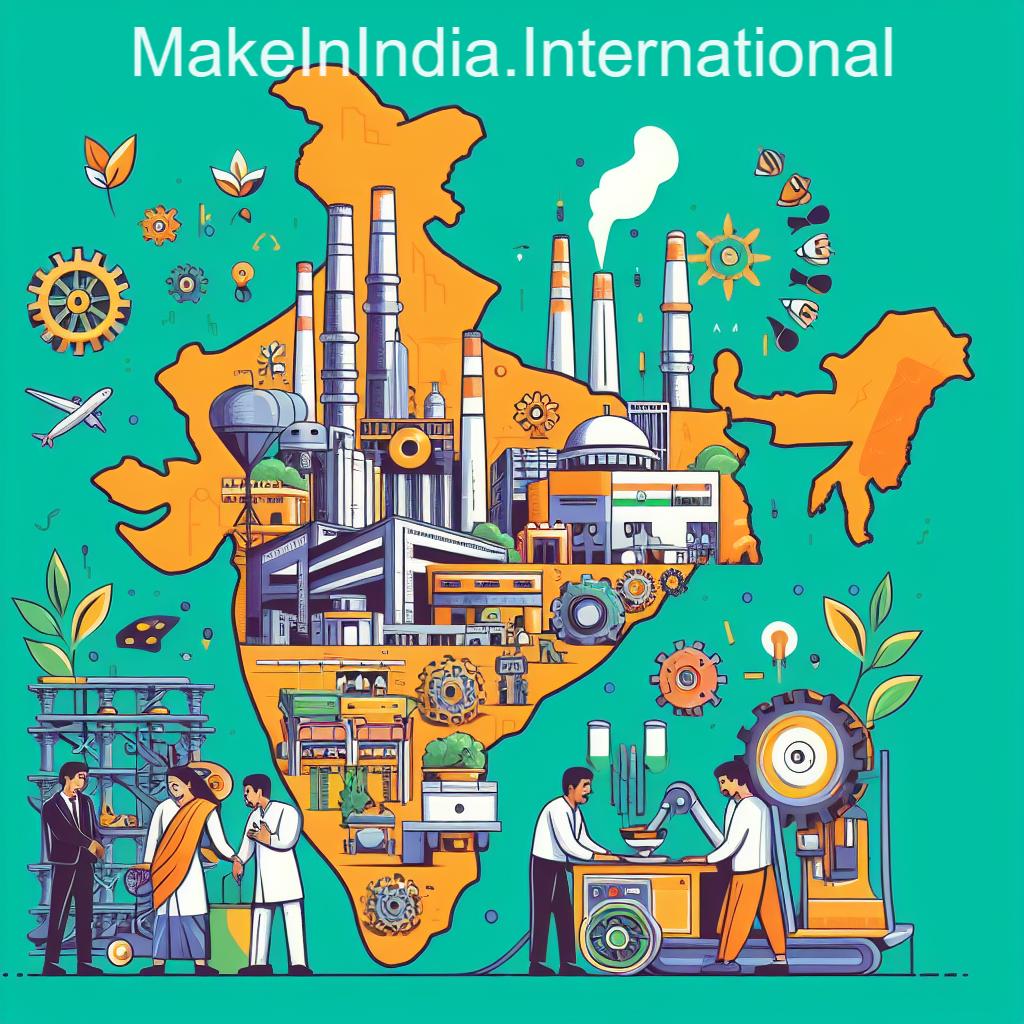Make in India: Transforming India into a Global Manufacturing Hub
Launched in 2014, Make in India is a bold initiative by the Indian government to transform the country into a global manufacturing powerhouse. It strives to attract foreign direct investment (FDI), boost domestic manufacturing, and create jobs – all with the ambition of making India a self-reliant economic giant.

Goals:
- Boost economic growth: By encouraging increased manufacturing activity, Make in India aims to significantly elevate India’s GDP and generate millions of new jobs.
- Develop key industries: The initiative focuses on 25 key sectors including automobiles, electronics, pharmaceuticals, textiles, and renewable energy. These sectors have been identified as having the potential to drive national growth and technological advancement.
- Improve infrastructure: Recognizing the crucial role of robust infrastructure in attracting investment, the initiative prioritizes improvements in ports, roads, railways, and energy grids.
- Enhance skill development: To keep pace with the manufacturing boom, Make in India emphasizes upskilling and reskilling the workforce to meet industry demands.
- Attract foreign investment: By creating a business-friendly environment with streamlined processes, tax incentives, and special economic zones, Make in India hopes to lure foreign companies to set up manufacturing units in India.
Target Sectors:
- Automobiles: India is already a major automotive hub, and Make in India aims to make it a global leader in electric vehicles, auto components, and automotive R&D.
- Electronics: The initiative seeks to turn India into a major electronics manufacturing center, attracting leading chip makers and electronics giants.
- Pharmaceuticals: With its large domestic market and skilled workforce, India has the potential to become a global pharmaceutical leader. Make in India supports this vision by encouraging domestic production and innovation.
- Textiles: India’s rich textile heritage is being leveraged to become a global leader in garment and fabric manufacturing, with a focus on sustainability and value-added products.
- Renewable Energy: Recognizing the importance of sustainable development, Make in India promotes domestic production of solar panels, wind turbines, and other renewable energy technologies.
Impact on Foreign Investors:
- Ease of doing business: Make in India simplifies regulations, streamlines approvals, and offers single-window clearance for investors, significantly reducing administrative hurdles.
- Financial incentives: The initiative provides tax breaks, subsidies, and special economic zone benefits to attract FDI, making India a more cost-effective manufacturing destination.
- Access to a large market: India boasts over 1.3 billion consumers, offering a vast domestic market for manufactured goods, along with potential access to neighboring markets.
- Skilled workforce: India has a large pool of talented and competitive engineers, scientists, and technicians, providing investors with a ready workforce.
- Technological advancements: Make in India fosters innovation and collaboration with global leaders, giving foreign companies access to cutting-edge technology and research opportunities.
In conclusion, Make in India is more than just a slogan; it represents a concerted effort to reshape India’s economic landscape. By providing a conducive environment for manufacturing, attracting foreign investment, and fostering innovation, the initiative holds immense potential to propel India toward a future of sustainable and inclusive economic growth.